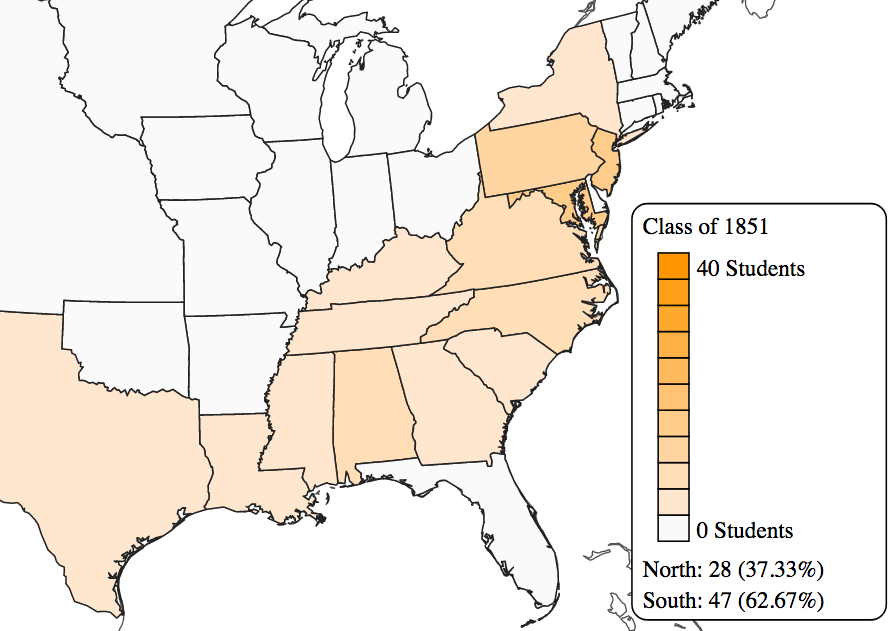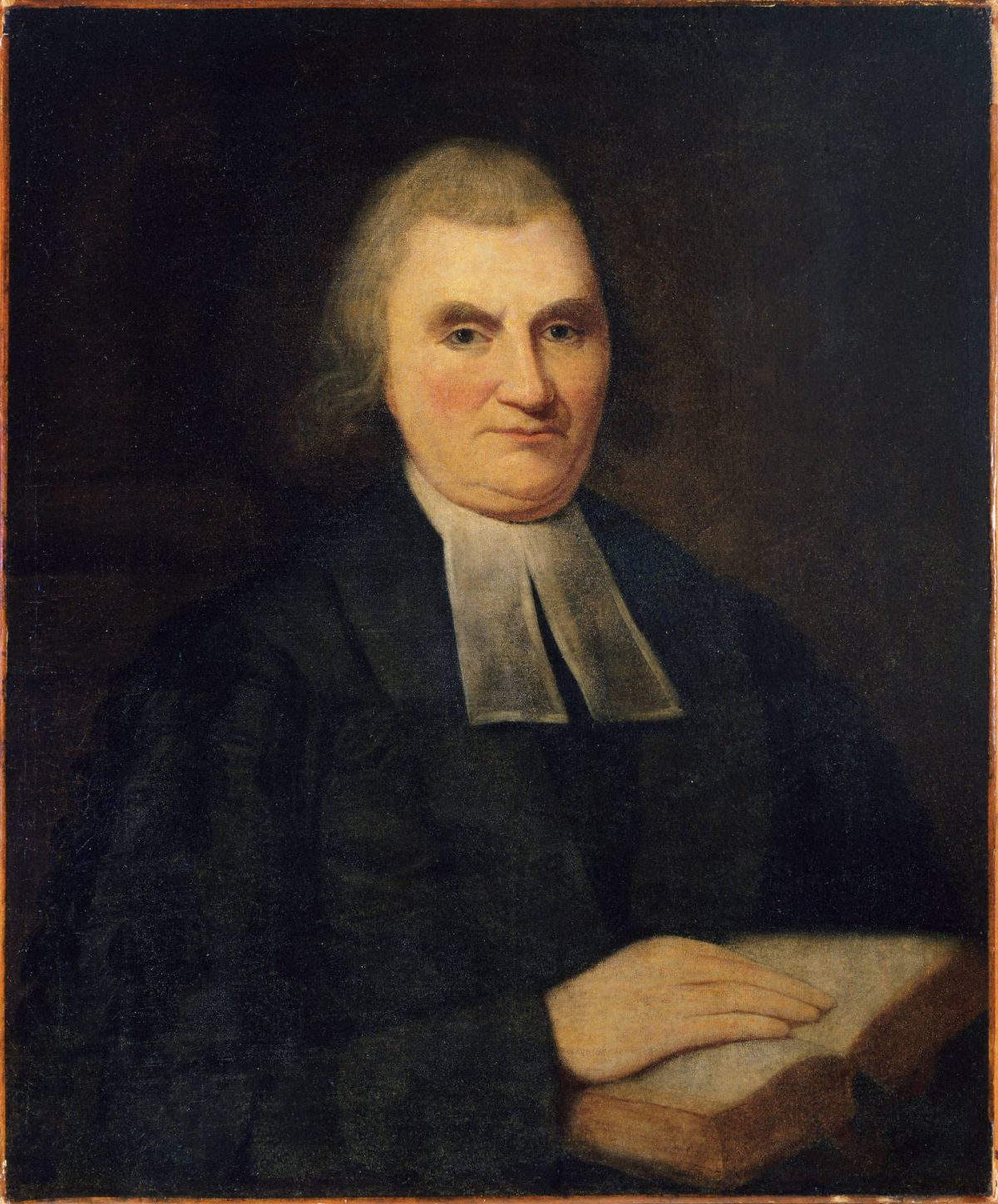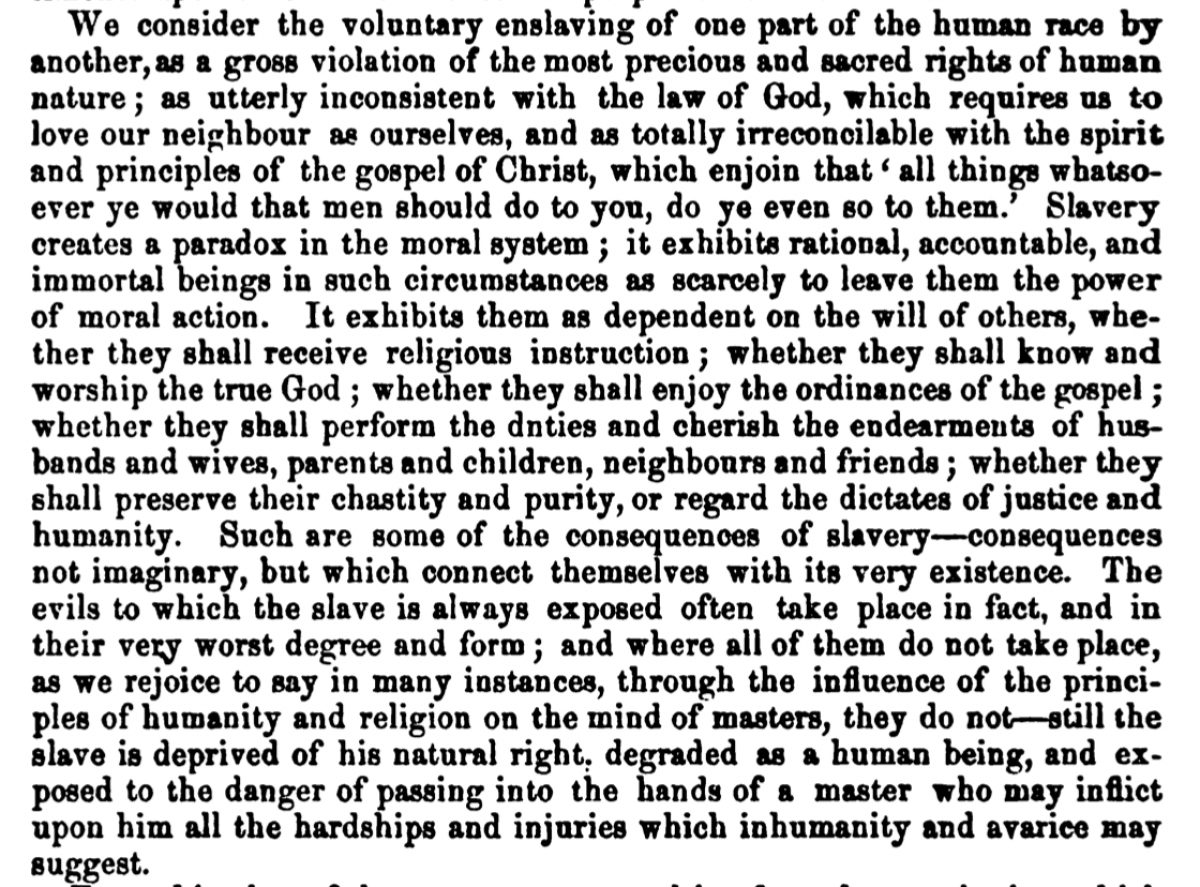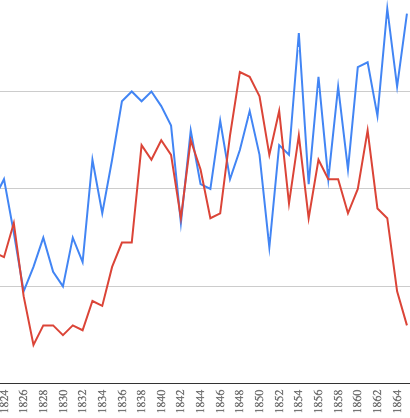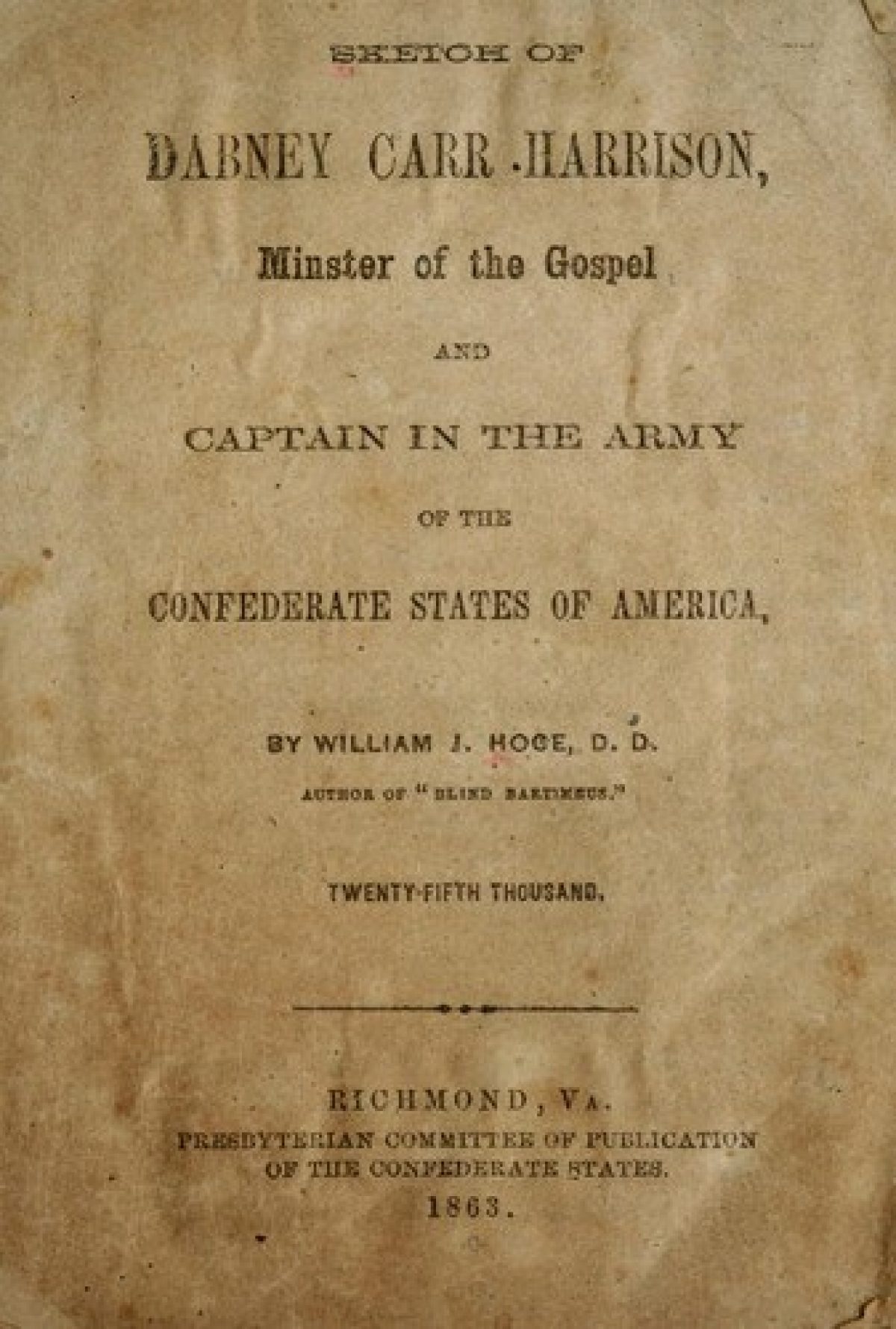[1]
Thomas Jefferson Wertenbaker, Princeton, 1746-1896 (Princeton, NJ: Princeton University Press, 1946), 170-183. See also, “Catalogue of the officers and students of the University of Virginia, First Session, March 7th, 1825-December 15th, 1825” (Charlottesville, VA: Chronicle Steam Book Printing House, 1880).
⤴
[2]
“Database of Princeton Student Origins,” Princeton & Slavery, Accessed January 18, 2022.
⤴
[3]
Kenneth Morgan, “George Washington and the Problem of Slavery,” Journal of American Studies 34, No. 2 (Aug. 2000): 279-301.
⤴
[4]
Alan Taylor, The Internal Enemy: Slavery and War in Virginia, 1772-1832 (New York: W.W. Norton, 2013), 33-42.
⤴
[6]
Warren R. Hofstra and Robert D. Mitchell, “Town and Country in Backcountry Virginia, Winchester and the Shenandoah Valley, 1730-1800,” Journal of Southern History 59, No. 4 (Nov. 1993): 619-646.
⤴
[7]
William Buell Sprague, Annals of the American Pulpit: Volume III, Presbyterian (New York: Robert Carter & Brothers, 1858), 392.
⤴
[8]
Samuel Doak, Princeton University General Biographical Catalogue, Box 30, Undergraduate Alumni Records, 18th Century, AC104-01, Princeton University Archives, Department of Special Collections, Princeton University Library.
⤴
[9]
Wanda S. Gunning, “The Town of Princeton and the University, 1756-1946,” The Princeton University Library Chronicle 66, No. 3 (Spring 2006), 452-454; Margaret Abruzzo, “‘A Humane Master—An Obliging Neighbor—A True Philanthropist’: Slavery, Cruelty and Moral Philosophy,” Princeton University Library Chronicle 66, No. 3 (Spring 2005): 493-512.
⤴
[11]
Sprague, Annals of the American Pulpit, 393.
⤴
[12]
Edmund Kirke, The Rear-Guard of the Revolution (New York: D. Appleton & Co., 1886), 217.
⤴
[13]
Knoxville Register, 14 April 1818.
⤴
[15]
William Birney, James G. Birney and His Times: The Genesis of the Republican Party with Some Account of the Abolition Movement in the South Before 1828 (New York: D. Appleton & Co, 1890), 74-76.
⤴
[16]
1830 United States Census, Population Schedule for the District of Eastern Tennessee, Microfilm Series 19, Roll 180, Records of the Bureau of the Census, Record Group 29, National Archives, Washington, D.C.
⤴
[18]
William Mayo Atkinson, Princeton University General Biographical Catalogue, Box 73, Undergraduate Alumni Records, 19th century, AC104-02, Princeton University Archives, Department of Special Collections, Princeton University Library.
⤴
[19]
R. Isabela Morales, “Ashbel Green,” Princeton & Slavery, Accessed December 14, 2021, https://slavery.princeton.edu/stories/ashbel-green; Minutes of the General Assembly of the Presbyterian Church in the United States of America from its organization A.D. 1789 to A.D. 1820 inclusive(Philadelphia: Presbyterian Board of Publication, 1847), 692–694.
⤴
[20]
Kneeboone, “Atkinson,” Encyclopedia Virginia.
⤴
[21]
Alfred Nevin, ed., Encyclopædia of the Presbyterian Church in the United States of America: Including the Northern and Southern Assemblies (Philadelphia: Presbyterian Encyclopædia Publishing, 1884), 42-43; Kneebone, “Atkinson,” Encyclopedia Virginia.
⤴
[22]
In 1830, Atkinson enslaved three women and a man to maintain his household; see 1830 United States Census, Population Schedule for Petersburg, Dinwiddie, Virginia, Microfilm Series 19, Roll 196, Records of the Bureau of the Census, Record Group 29, National Archives, Washington, D.C.
⤴
[23]
Southern Religious Telegraph (Richmond, VA), September 11, 1835.
⤴
[24]
Alton Observer (Alton, IL), May 4, 1837; Liberator (Boston, MA), July 7, 1837; Richmond Inquirer, March 2, 1849.
⤴
[25]
Samuel S. Hill and Charles H. Lippy, editors, 2nd ed., Encyclopedia of Religion in the South (Macon, GA: Mercer University Press, 2005), 572-575; United States Gazette (Philadelphia, PA), June 2, 1838.
⤴
[26]
Kneeboone, “Atkinson,” Encyclopedia Virginia.
⤴
[27]
William Mayo Atkinson, “A Sermon Delivered at the Installation of the Rev. John M.P. Atkinson, as Pastor of the Church at Warrenton, Fauquier, Virginia, September 15, 1844” (Winchester, VA: Winchester Republican, 1844).
⤴
[28]
Nevin, ed., Encyclopædia of the Presbyterian Church, 43; Alexandria Gazette, 1 March 1849.
⤴
[29]
“Harrison of James River,” Virginia Historical Magazine 37, No. 2 (April 1929), 179.
⤴
[30]
1830 United States Census, Population Schedule for Albemarle, Virginia, Microfilm Series 19, Roll 197, Records of the Bureau of the Census, Record Group 29, National Archives, Washington, D.C.; History of West Virginia Old and New and West Virginia Biography (Chicago: American Historical Society, 1923), 242; “Reverend Peyton Harrison,” Capturing Our Heritage, Scottville Museum, Scottsville, VA, Accessed December 16, 2021, https://scottsvillemuseum.com/church/peytonharrison/homeAW02cdAW01big.html.
⤴
[31]
William J. Hodge, Sketch of Dabney Carr Harrison Minister of the Gospel and Captain in the Army of the Confederate States of America (Richmond: Presbyterian Committee of Publication of the Confederate States, 1863), 5.
⤴
[32]
Dabney Carr Harrison, Princeton University General Biographical Catalogue, Box 100, Undergraduate Alumni Records, 19th century, AC104-02, Princeton University Archives, Department of Special Collections, Princeton University Library.
⤴
[34]
See diary entry of Henry Craft as quoted in Sandweiss and Hollander, “Holding the Center,” Princeton & Slavery.
⤴
[35]
Catalogue of the University of Virginia, Session of 1849-50’ (Richmond: H.K Ellyson, 1850).
⤴
[36]
Address reprinted in the Spirit of the South (Eufaula, AL), 11 February 1851.
⤴
[37]
Dabney Carr Harrison, Princeton University General Biographical Catalogue, Box 100, Undergraduate Alumni Records, 19th century, AC104-02, Princeton University Archives, Department of Special Collections, Princeton University Library.
⤴
[38]
Hodge, Sketch of Dabney Carr Harrison, 6-9; Evening Star (Washington, D.C.), 3 February 1857.
⤴
[39]
Hodge, Sketch of Dabney Carr Harrison, 11-12.
⤴
[40]
James P. Holcombe, “Is Slavery Consistent with Natural Law?,” Southern Literary Messenger 27, No. 6 (December 1858), 421.
⤴
[41]
Hodge, Sketch of Dabney Carr Harrison, 14.
⤴
[42]
“Fall of Gallant Officers,” Richmond Dispatch, February 27, 1862.
⤴
[43]
Hodge, Sketch of Dabney Carr Harrison, 45.
⤴
[45]
Alfred L. Brophy, University, Court, and Slave: Pro-Slavery Thought in Southern Colleges and Courts and the Coming of the Civil War (New York: Oxford University Press, 2016; Michael O’Brien, Conjectures of Order: Intellectual Life and the American South 1810-1860, 2. vols (Chapel Hill: University of North Carolina Press, 2004). See also, Jennifer Oast, Institutional Slavery: Slaveholding Churches, Schools, Colleges, and Businesses in Virginia, 1680-1860 (New York: Cambridge University Press, 2016); William W. Freehling, The Road to Disunion Vol. 1: Secessionists at Bay, 1776-1854 (New York: Oxford University Press, 1990); William W. Freehling, The Road to Disunion Vol. 2: Secessionists Triumphant, 1854-1861 (New York: Oxford University Press, 2007); Lacy K. Ford, Deliver Us from Evil: The Slavery Question in the Old South (New York: Oxford University Press, 2009).
⤴




